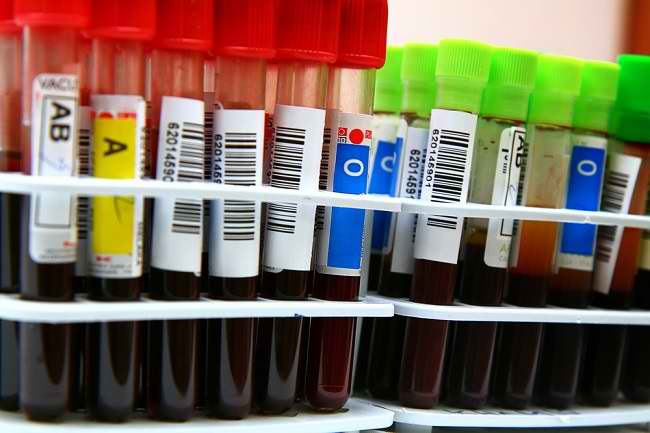Tooth loss can affect a person’s quality of life. Loss of teeth means the loss of some orofacial structures, such as bone tissue, nerves, receptors, and muscles resulting in a decreased of most orofacial functions. Patients who experience tooth loss will have difficulty in chewing. Moreover, this condition can also interfere with the patient’s psychology because one of the functions of the teeth is also an aesthetic function. Alveolar bone loss due to periodontal disease or surgery (trauma) is one of the most common complications. Alveolar bone damage can be prevented from getting worse with periodontal therapy so that regeneration occurs.
Periodontal regeneration involves repairing the bone, cementum, and periodontal fibers after the damage have occurred due to the periodontal disease process. Bone graft is a substance that can replace the missing bone. Bone graft serves to stimulate the process of osteogenesis, osteoinduction, and osteoconduction. There are several types of bone grafts, namely autograft, allograft, and xenograft. Autografts have limitations such as; donor site morbidity, limited bone that can be donated, and the possibility of inadequate resorption during the healing process. Allografts and xenografts also have several problems such as the risk of disease transmission, inflammation, immunogenicity, and loss of biological and mechanical properties. The role of tissue engineering, namely alloplastic graft (synthetic bone graft) is needed to help regenerate damaged structures and tissues as an alternative to bone graft. The use of bone graft is now widely accepted, because it is known that grafts have osteoconductive and osteoinductive properties.
Chitosan has many biological properties. Chitosan has been shown to accelerate wound healing by activating and modulating the function of inflammatory cells such as neutrophils, macrophages, fibroblasts, and endothelial cells as well as increasing the formation and regulation of granulation tissue. Blood has an important role in the process of bone remodeling. Blood is a transport vehicle that contains platelets containing various kinds of growth factors. In the process of bone grafting, the space created by the graft is filled with blood clot. The clot will be absorbed and replaced with granulation tissue rich in new blood vessels filled with nutrients and mesenchymal stem cells, promoting osteoid formation. Blood mixed with chitosan will affect the activity of osteoblasts.
In blood type serology, type O blood has the most H antigens. Antigens on the surface of red blood cells will be recognized as foreign antigens when transfused to recipients who do not have identical antigens as the donor. The expression of a blood group antigen is controlled by genes. In the ABO and Lewis blood groups, the gene control is expressed by the enzyme responsible for the attached sugar/carbohydrate (Substance H) which will provide a specific antigen from the precursor substance. Type O blood has neither A nor B antigens but has both antibodies in the serum. The pericardial membrane has good consistency, easy to manufacture, and can be processed to a thickness of 0.5mm. One study found that bovine pericardium together with xenografts has been used in the augmentation of alveolar ridge defects . The use of membranes as a barrier has been developed and tested to prevent epithelial cell and connective tissue cells from invading the deficient space. Based on the background stated above, this study aims to examine the effect of the pericardial membrane on the rate of adsorption of type O blood on chitosan with a size of 150-355 μm.
From the research that has been carried out, result of the mean and standard deviation of the calculation of the adsorption speed (ml/second) of chitosan size 150 – 355 µm with the pericardial membrane and without a pericardial membrane to blood group O with 30 second intervals. It was found that the average rate of adsorption of type O blood with the largest pericardial membrane occurred at 210 and 360 seconds, which was 0.000003 ml/second. For chitosan without pericardial membrane, the highest average rate of adsorption of group O blood occurred at the 30th second, namely 0.009172ml/second, with standard deviation values of 0.000001 with pericardial membrane and 0.009172 for without pericardial membrane, respectively. Both with the pericardial membrane and without the pericardial membrane, it was found that in the next second the rate of adsorption of type O blood was relatively decreasing. It can be seen the average value of the adsorption speed of type O blood, every 30 seconds for 10 minutes. At the 30th second, the highest average rate of adsorption of group O blood was seen in chitosan without a pericardial membrane. Data collection used a time interval of 30 seconds, starting at 30 seconds and then continued until the last data was taken at 600 seconds. at the 30th second to the 600th second, which means that there are significant differences between the treatment groups. From the test results, it was found that the rate of adsorption of group O blood on chitosan with a pericardial membrane and without a pericardial membrane showed a significant difference between the treatment groups. This study shows the pericardial membrane functions as a good barrier. In guided tissue regeneration (GTR) the membrane as a barrier serves to provide space for the defect so as to provide the opportunity for periodontal tissue to regenerate. In guided bone regeneration (GBR) the membrane is positioned to prevent fibroblastic cells from colonizing the intraosseous wound (with or without bone grafting) during healing, as the osseous cells migrate to fill the defect. So that bone regeneration can occur directly and its deposition can occur.
Author: Harly Prabowo





